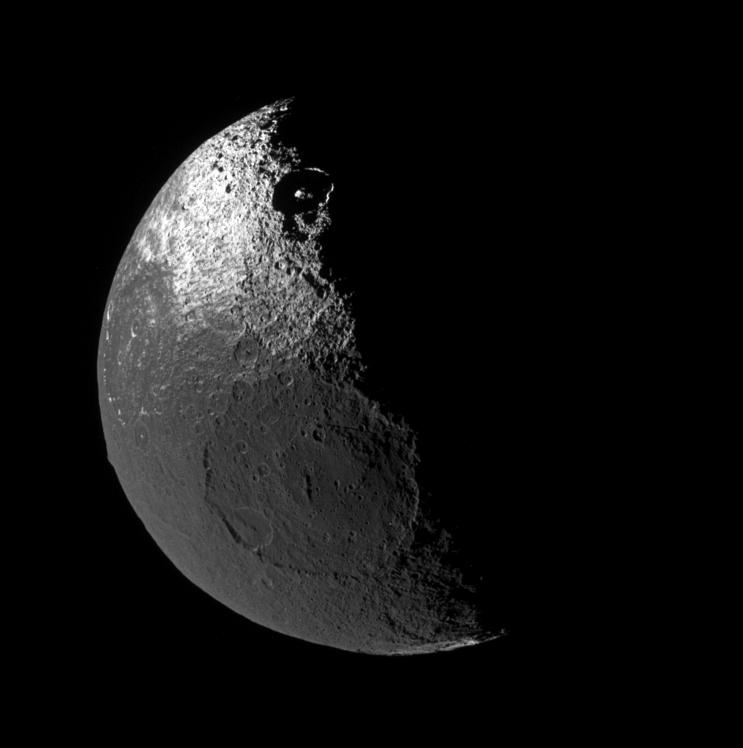A Moon with Two Dark Sides

| PIA Number | PIA07660 |
|---|---|
| Language |
|
Although it is no longer uncharted land, the origin of the dark territory of Cassini Regio on Iapetus remains a mystery. Also puzzling is the equatorial ridge that bisects this terrain, and how it fits into the story of the moon's strange brightness dichotomy. The ridge is seen here, curving along the lower left edge of Iapetus.
The view looks down onto the northern hemisphere of Iapetus (1,468 kilometers, or 912 miles across), and shows terrain on the moon's leading hemisphere.
The image was taken in polarized green light with the Cassini spacecraft narrow-angle camera on Nov. 12, 2005 at a distance of approximately 417,000 kilometers (259,000 miles) from Iapetus and at a Sun-Iapetus-spacecraft, or phase, angle of 95 degrees. Image scale is about 2 kilometers (1 mile) per pixel.
The Cassini-Huygens mission is a cooperative project of NASA, the European Space Agency and the Italian Space Agency. The Jet Propulsion Laboratory, a division of the California Institute of Technology in Pasadena, manages the mission for NASA's Science Mission Directorate, Washington, D.C. The Cassini orbiter and its two onboard cameras were designed, developed and assembled at JPL. The imaging operations center is based at the Space Science Institute in Boulder, Colo.
For more information about the Cassini-Huygens mission visit http://saturn.jpl.nasa.gov . The Cassini imaging team homepage is at http://ciclops.org .
Credit: NASA/JPL/Space Science Institute
